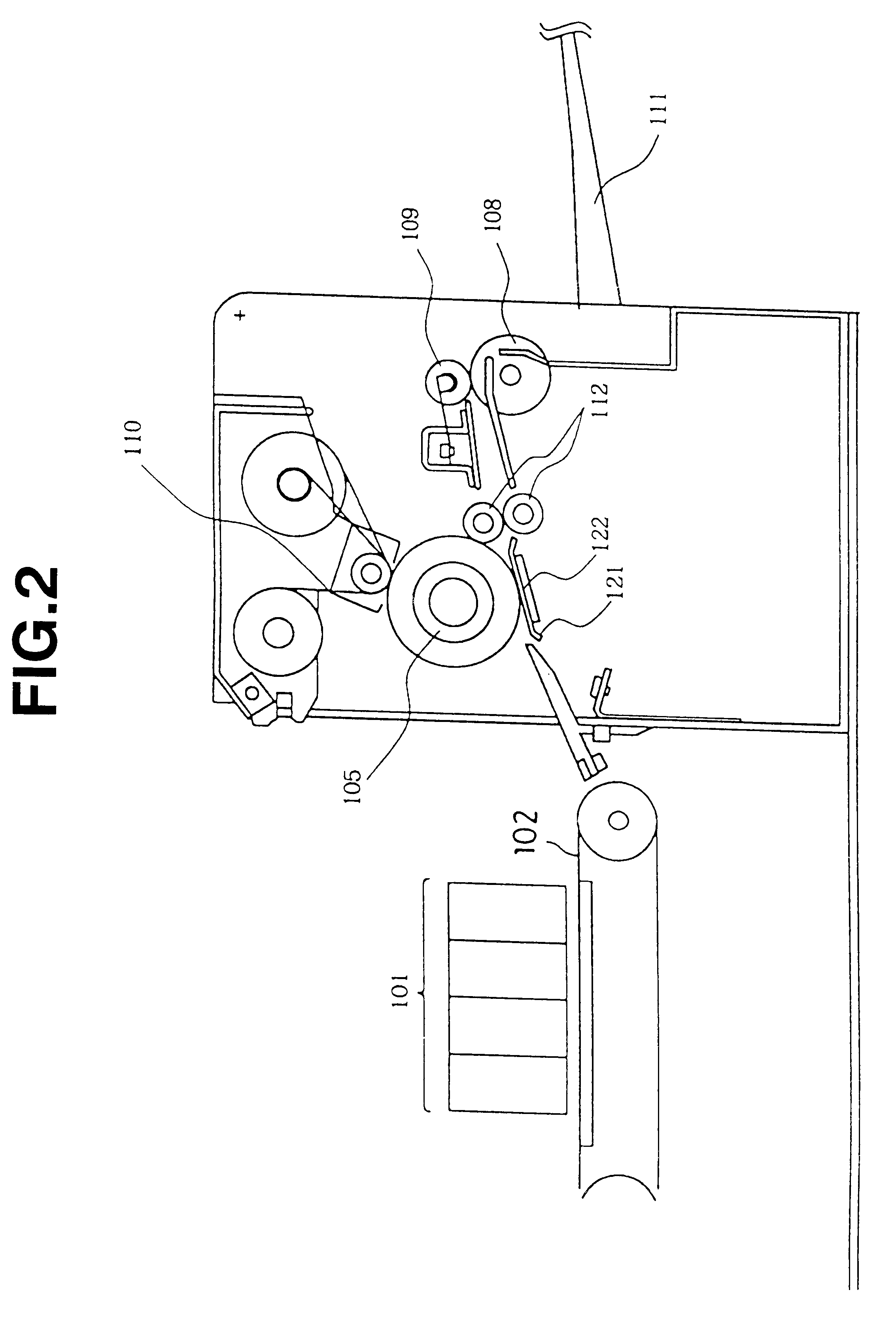Image forming method and image forming apparatus
a technology of image forming and forming method, which is applied in the direction of other printing apparatus, duplicating/marking methods, printing, etc., can solve the problems of reducing the density of images, reducing the glossing property of visible images, and discoloring or faded materials
- Summary
- Abstract
- Description
- Claims
- Application Information
AI Technical Summary
Benefits of technology
Problems solved by technology
Method used
Image
Examples
second example of first embodiment
In this invention, the thermal pressing member in contact with a surface on which visible images are formed is workable as long as it operates at a speed equal to or less than a prescribed value and is also workable as long as the ink solvent component is adequately dried (or soaked into the reception layer) at a point where the thermoplastic layer (flattened layer) loses permeation nature in the nip region or the region upstream of the nip region. Accordingly, there is no particular limitation on the side of the non-recording surface of the recording medium. Therefore, as shown in FIG. 2, an iron plate or the like can be used for the non-recording surface side. In FIG. 2, a conveyance guide 121 opposing the upper heating roller 105 is a flat planar guide, and has a PTC heater 122 on the non-conveyance side. With this image forming apparatus of such a structure, a flattening process can be made by the upper heating roller 105 made of a silicon rubber as used in the above example, in...
third example of first embodiment
In this Example, the thermal pressing member has an inner layer made of rubber and a porous material and can be made as a belt. Now, an image forming apparatus having substantially the same structure shown in Example 1, but using such a thermal pressing member, will be described. FIG. 3 is a cross section showing an apparatus using a heating belt 300. The recording medium having images formed by a recording head 101 is conveyed to the flattening process by a conveyance roller 103 serving as a conveying means, sandwiched by a heating belt 300, which is wound around the heating plate 301 and the tension roller 304, and a pressing roller 30, and pressed with heat. The pressing amount is determined by a spring force that the pressing roller 306 pushes up from the lower side of the apparatus and by respective elastic forces. The temperature is set by a plate heater 301, which is disposed at the opposing position to the pressing roller 306 on the surface of the heating belt 300. The heati...
second embodiment
A second embodiment of the present invention will be described hereinafter. A method of this embodiment is for recording images on a transfer medium, not a recording medium of the first embodiment. Moreover, a transfer process of the second embodiment corresponds to the flattening process of the first embodiment, wherein in the transfer process, a transfer layer on which ink is disposed is transferred to a material to be printed.
The transfer medium used for the second embodiment of the invention is made of at least a base material and a transfer layer, which is a porous layer consisting of material such as resin and formed on the base material. The transfer layer is transferred to a material to be printed in a condition that porous construction is lost by heat melting after thermal transfer onto the material to be printed, and if the base material has a structure that the base material can be separated, a transfer medium previously known can be used. In this second embodiment, as di...
PUM
| Property | Measurement | Unit |
|---|---|---|
| Temperature | aaaaa | aaaaa |
| Speed | aaaaa | aaaaa |
| Boiling point | aaaaa | aaaaa |
Abstract
Description
Claims
Application Information
 Login to View More
Login to View More - R&D
- Intellectual Property
- Life Sciences
- Materials
- Tech Scout
- Unparalleled Data Quality
- Higher Quality Content
- 60% Fewer Hallucinations
Browse by: Latest US Patents, China's latest patents, Technical Efficacy Thesaurus, Application Domain, Technology Topic, Popular Technical Reports.
© 2025 PatSnap. All rights reserved.Legal|Privacy policy|Modern Slavery Act Transparency Statement|Sitemap|About US| Contact US: help@patsnap.com



